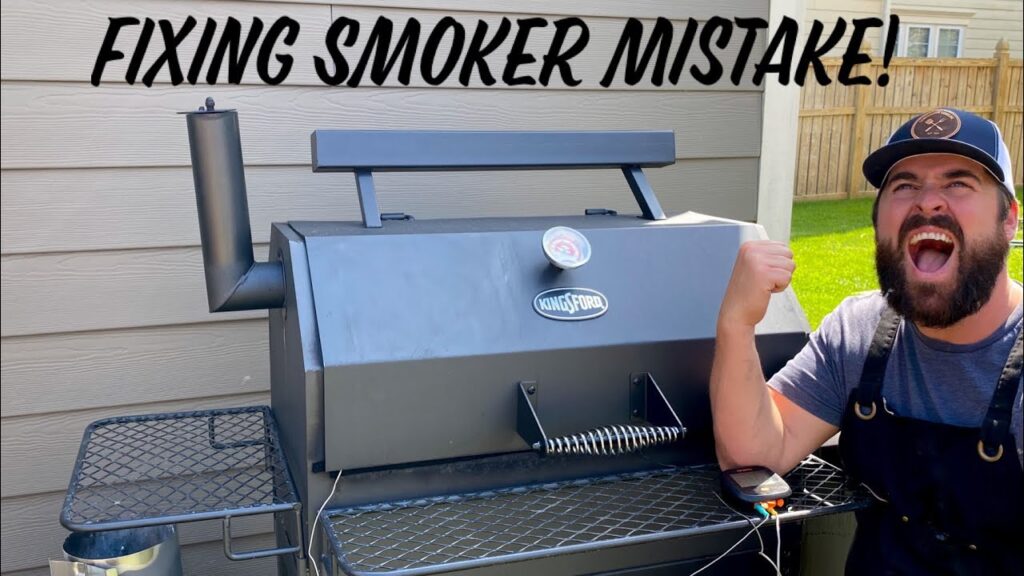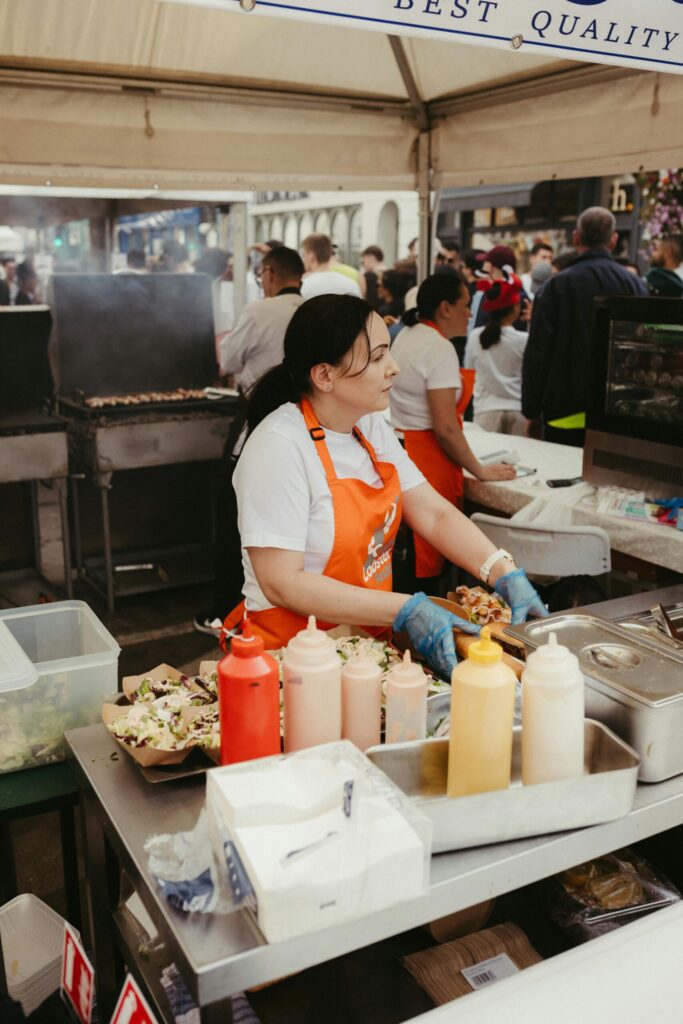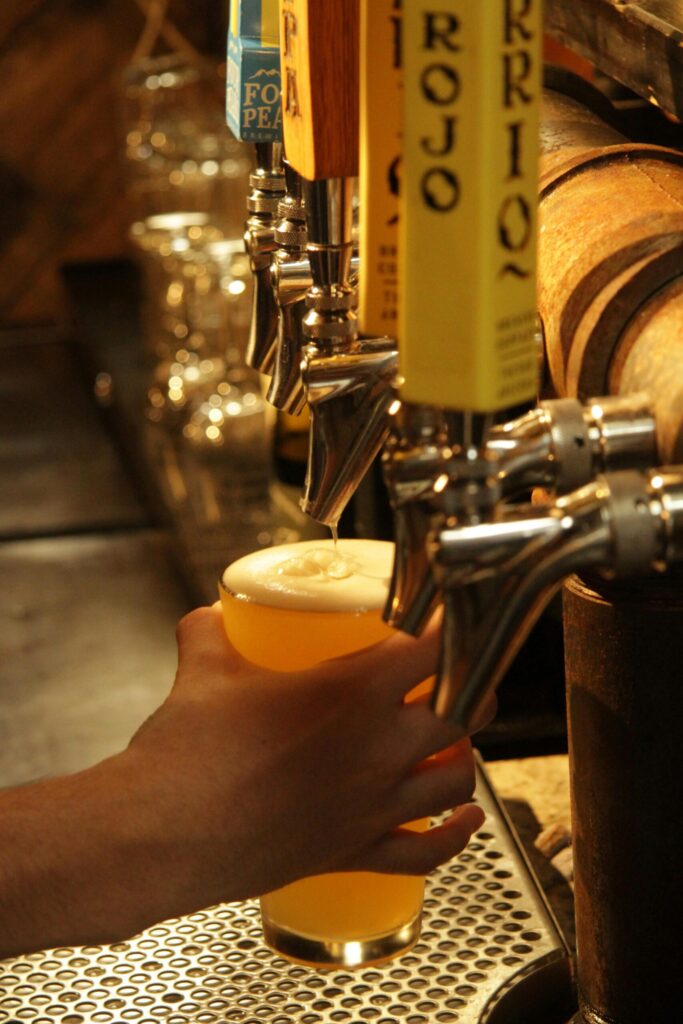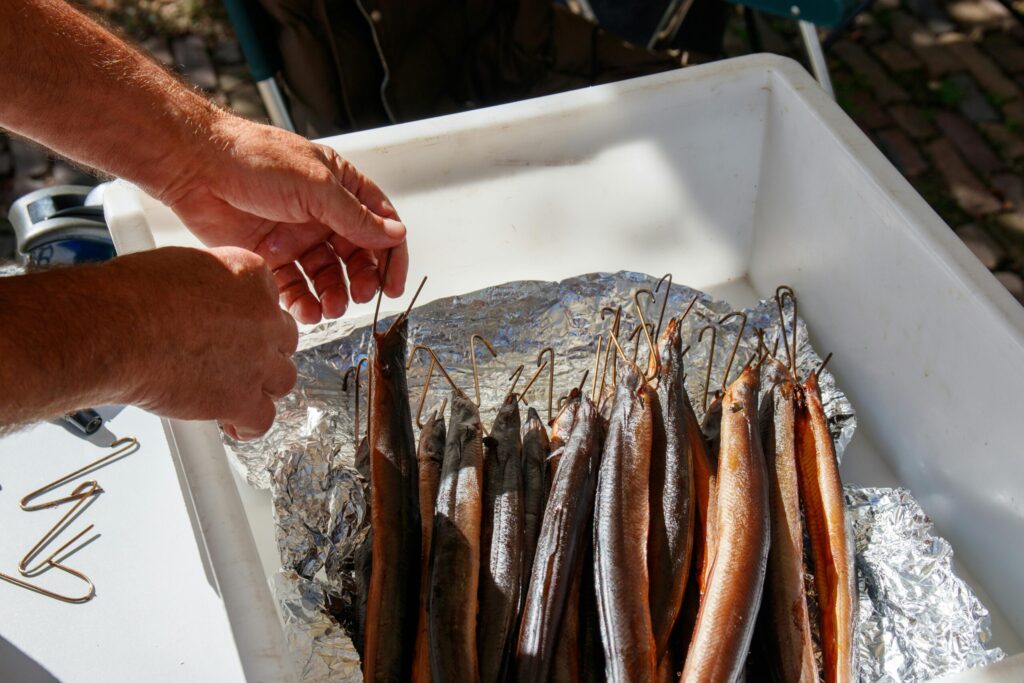In “Offset Smoker – Fixing A Beginners Mistake! Practical Setup And Troubleshooting Guide”, you’ll find a clear, budget-friendly fix for the most common error new offset smoker owners make, plus why that change matters for steady temperature and better smoke control. This short guide is designed to save you time and frustration so your smoker runs more consistently and feels safer to use.
You’ll get plain-language, step-by-step setup and DIY modification instructions, troubleshooting checkpoints, explanations of good versus bad smoke and vent control, plus simple cleaning and maintenance routines. Follow the safety tips and practice the steps to build confidence and enjoy reliably smoked results with your Offset Smoker. You’re about to learn a focused, low-cost fix that solves the single biggest beginner mistake on many offset smokers. This guide explains why the mistake causes unstable temps and poor smoke, how to inspect and modify your smoker safely, what tools and materials you’ll need, and how to run your first cook after the mod. Follow the steps, practice vent control, and you’ll get steadier results and more enjoyable smoking sessions.

This image is property of i.ytimg.com.
Understanding the Biggest Beginner Mistake
You’ll find that most first-time offset smoker cooks make the same core error: letting uncontrolled leaks and poor firebox-to-chamber alignment dominate airflow instead of managing it. That mistake turns your smoker into a drafty box where the fire decides the conditions instead of you.
Describe the common mistake seen in first offset smoker cooks
The common mistake is assuming the factory gaps, warped seams, or poorly aligned smoke ports are good enough. You’ll often leave the firebox-to-chamber seam open, ignore missing gaskets, or run without addressing loose doors and uneven ports. That lets air take unintended paths and bypass the regulated intake/exhaust system you should be using.
Explain why the mistake causes temperature instability and poor smoke flow
When smoke and air leak freely through seams, you lose control of draft. Cold air can enter at unwanted places, starving or overfeeding the fire, while hot smoke escapes before traversing the cook chamber. That creates wild temperature swings, uneven cooking, and thick white smoke or flare-ups that impart bitter flavors.
Show how the mistake manifests on popular models (example: Kingsford Stockade 49)
On models like the Kingsford Stockade 49 you’ll see gaps at the firebox seam, a loose smoke cap, or a misaligned firebox door that lets air bypass the intended intake vents. Owners report hard-to-hold temps and smoke that dumps too quickly rather than flowing across racks. Fixing those gaps on the Stockade 49 often dramatically improves stability.
Clarify how early recognition saves time and food
If you recognize the issue early, you’ll avoid long, frustrating cooks where meat overruns, gets under-smoked, or takes longer than expected. Fixing leaks before a big event saves fuel, prevents ruined batches, and reduces the time you spend troubleshooting mid-cook.
List symptoms to identify the mistake during a cook
You can spot the mistake by these symptoms: rapid temperature swings, need to constantly feed fuel to hold temp, uneven rack temperatures, visible smoke escaping from seams rather than chimney, and frequent flare-ups. If you see these, check for gaps and alignment problems before changing your fuel or technique.
Tools and Materials for the Inexpensive Fix
You don’t need a full metal shop to make an effective repair. A few basic tools and inexpensive materials will let you fabricate a patch or baffle that directs airflow properly and seals leaks.
Essential workshop tools (wrenches, drill, pop rivet gun, wire brush)
Bring basic hand tools: a set of wrenches and sockets to remove doors and grates, a drill with metal bits for fastener holes, a pop rivet gun or self-tapping screws for attaching patches, and a stiff wire brush to clean mating surfaces before sealing. These tools keep the job simple and reliable.
Recommended inexpensive materials (sheet metal, high-temp silicone, gaskets, metal screws)
Use 18–22 gauge sheet metal to fabricate patches or baffles, high-temperature silicone or stove gasket cement for smoke-tight seals, a roll of stove gasket material for doors, and stainless or zinc-plated metal screws/rivets. These parts are cheap but durable for the temperatures you’ll see.
Optional items that improve ease (magnetic thermometer mount, metal cutting shears)
Optional helpers include metal shears for faster cutting, a small angle grinder for smoothing edges, magnets to temporarily hold patches during fitting, and a magnetic thermometer mount to place thermometers exactly where you want them. They speed the job but are not strictly required.
Where to source parts safely and affordably
You can source sheet metal, gaskets, and fasteners at local hardware stores, metal suppliers, or online retailers. Pick materials rated for high heat when possible, and buy mild steel or stainless for longevity. Shop around to compare small-quantity prices to avoid costly excess.
Checklist to prepare before starting the mod
Before you start the mod, make sure you have: proper safety gear (gloves, eye protection), the smoker on a stable work surface, basic tools (wrenches, drill, rivet gun), replacement gasket material and high-temp sealant, cut-to-fit sheet metal, and a plan for testing. Having these ready makes the project smooth and safe.
Assessing Your Offset Smoker Before Modifying
A careful assessment will tell you whether the inexpensive DIY mod is the right approach or if deeper repair is warranted. You’ll save effort by inspecting key areas first.
Inspect firebox-to-chamber gaps, gaskets, and smoke leaks
Open the smoker and visually inspect the firebox seam, door edges, and the smoke port. Look for visible gaps, crushed or missing gasket material, and rusted-through metal. Small gaps can be patched; large missing sections or heavily corroded metal may need professional attention.
Document current airflow path and damper positions
Note where air is entering and exiting the system during a cold and a hot test fire. Record damper positions that let the smoker run (e.g., intake one-quarter open, exhaust half open). You’ll use this baseline to judge improvement after the mod.
Measure grate levels and firebox height relative to cook chamber
Measure the vertical position of the fire grate relative to the bottom of the cooking chamber and the smoke port. If the fire sits too low, heat and smoke may not travel through the chamber properly. Small height adjustments or a baffle can help establish more consistent heat transfer.
Check for rust, warped seams, and weak welds that affect mod success
Tap seams and welds; if metal flakes away or bends easily, a patch alone won’t hold under heat. Surface rust is fixable by removing scale and sealing; severe corrosion or warped components may need welding or replacement.
Decide whether a DIY mod is appropriate or if professional repair is needed
If your smoker has moderate gaps, missing gasket, or small warps, a DIY patch and new gaskets are appropriate. If you find large structural damage, collapsed firebox, or severe metal loss, consider a professional weld or replacement parts for safety and longevity.
DIY Modification: Fixing the Beginner’s Mistake
The inexpensive fix focuses on re-establishing a controlled airflow path by sealing leaks and adding a simple baffle or patch that forces smoke through the cook chamber.
Overview of the inexpensive fix and how it changes airflow/heat
You’ll fabricate a sheet-metal patch or short baffle that fills the gap between the firebox and the smoke port and seal seam edges with gasket and high-temp silicone. That forces smoke and heat to flow through the cooking chamber and out the chimney instead of escaping through gaps, improving draft stability and heat transfer.
Step-by-step instructions to fabricate and fit the patch or baffle
- Clean the mating surfaces with a wire brush. 2. Measure the gap and cut a sheet-metal piece slightly oversized to allow for fastening. 3. Deburr edges and test-fit the patch; use magnets or clamps to hold it. 4. Drill fastener holes through the patch and smoker body. 5. Fasten with pop rivets or screws, but don’t fully seal yet—test alignment first.
How to seal seams using high-temp gasket or silicone for smoke-tight joints
After fastening, apply a continuous bead of high-temp silicone or stove gasket cement along seam edges and press gasket material where doors meet frames. Allow the adhesive to cure per manufacturer instructions. The sealed seam prevents air bypass and reduces draft variability.
Tips for aligning the firebox door and smoke port for steady draft
Make sure the firebox door closes square and latches tightly; replace or add gasket material to the door perimeter. Check that the smoke port aligns with the patch and that the chimney connection seats without wobble. A slight upward tilt from the firebox to the cook chamber helps smoke travel; avoid downward angles that trap grease or water.
How to test the mod safely before a full cook
Start with a small charcoal-only fire and run the smoker to target temp. Watch for smoke escaping at seams and check thermometer stability. If leaks appear, shut down, cool, and re-seal. Once the smoker holds a steady temp for 30–60 minutes with minimal seam smoke, you’re ready for a full cook.

This image is property of images.pexels.com.
Step-by-Step Setup Guide for First Post-Mod Cook
After the fix, you’ll want a clean, safe setup routine to take advantage of improved airflow and to learn how your smoker responds.
Preparing the smoker: cleaning ash, grates, and drip areas
Remove old ash, clean grates and the grease pan, and clear the drip area. Excess ash restricts airflow through the charcoal grate and can cause hot spots. A clean chamber also improves smoke flavor and reduces flare risk.
Positioning the smoker for safe operation and good airflow
Set your smoker on level ground, clear of combustibles, and with room for air to flow into the intake and exhaust. Position so prevailing winds help pull smoke up the chimney, not across the cook chamber. Keep tools and fuel within reach but off the immediate heat path.
Loading fuel: charcoal/wood placement strategy for even heat
Pile charcoal to form a stable bed near the firebox intake while leaving room for airflow beneath the grates. If using wood, add smaller splits or chunks to maintain consistent coals rather than large logs that spike temps. Place fuel toward the rear of the firebox so heat flows into the cook chamber evenly.
Starting procedures: lighting technique and bringing smoker up to temp
Use a chimney starter or char starter to light fuel quickly and place it into the firebox. With intake and exhaust partially open, let the smoker warm gradually to minimize stress on seals. Increase vent openings slowly until you reach your target temperature.
Stabilizing temperature: adjusting vents and waiting for equilibrium
Once approaching target temp, make small vent adjustments and wait 10–20 minutes between changes to let the smoker settle. Post-mod you’ll often find smaller adjustments achieve larger results; refine your positions and document them for future cooks.
Firebox Management and Fuel Strategy
Fuel choice and how you manage the firebox determine burn rate, flavor, and stability. Learn how each fuel behaves and how to feed it for consistent results.
Differences between lump charcoal, briquettes, and wood logs
Lump burns hotter and faster with less ash; briquettes burn more steadily and are easier to manage long-term; wood adds more flavor complexity but can be less predictable in burn rate. Choose based on how much active management you want to do and how long the cook will be.
Building a stable fire: small hot pile vs snake or Minion methods (conceptual only)
A small, concentrated hot pile gives you rapid, high heat and is easy to tend. The Minion or snake methods build a long, slow burn by layering coals and unlit fuel that ignite gradually. Conceptually, pick the method that matches your desired unattended cooking time and how often you want to feed.
How to maintain consistent burn rate without overloading the firebox
Avoid stuffing large amounts of fuel at once. Add small batches of charcoal or wood at intervals to keep a steady heat output. Overloading spikes temps and increases fuel waste; controlled, measured additions smooth the temperature curve.
When and how to add fuel to avoid temperature swings
Add fuel to the side or toward the back of the firebox where it will gradually integrate with existing coals. Add just enough to keep the fire burning at target, and do it when the smoker is stable so you can see the real effect of the addition. Avoid opening the firebox wide during critical phases.
Managing ash buildup and why it affects airflow
Ash chokes the charcoal grate and limits fresh air under the fire, causing temperature drop or smoldering. Remove ash between cooks and clear it during long sessions if it’s building up. A clean ash pan maintains consistent draft and burn behavior.

This image is property of images.pexels.com.
Vent and Airflow Control Fundamentals
Understanding draft is core to your control strategy. Small vent changes can produce large shifts, so learn to think in terms of airflow volume rather than just “more” or “less.”
Principles of draft: intake vs exhaust and how they interact
Draft is driven by the difference between intake (where air enters) and exhaust (chimney). You control fire strength by setting intake; exhaust controls how quickly that air leaves. Balance both so smoke flows across the racks rather than short-circuiting through leaks.
How small vent movements translate to big temperature changes
Vents act like faucets on oxygen. A small increase in intake can feed the fire significantly and spike temperatures, while a small closure can starve it and cause smoldering. Make incremental adjustments and wait for the smoker to react before making more changes.
Practical vent adjustment sequence during startup, steady state, and re-fueling
During startup, open both intake and exhaust to establish draft. At steady state, reduce intake to maintain fire rate and set exhaust for a gentle outflow. When re-fueling, slightly open exhaust to prevent smoke build-up and close intake if temps climb, then return to steady positions after stabilization.
How the DIY mod affects vent behavior and recommended re-calibration
After the mod, vents will likely become more effective because leaks are sealed. That means your previous vent settings may over- or under-feed the fire. Re-calibrate by taking notes: try small adjustments from your baseline and record what produces the desired temp.
Using vents with a thermometer to develop an intuitive control routine
Put a reliable thermometer in the cook chamber and watch how the curve responds to vent moves. Over a few cooks you’ll learn a routine: which fraction open gives you certain temp ranges. That intuition lets you make the right small moves quickly.
Temperature Control and Monitoring
Good thermometry and a control approach let you interpret smoker behavior and react before it ruins the cook.
Recommended thermometer setup: probe placement and types (dual-probe, ambient vs meat)
Place an ambient probe near the center of the cooking rack, not directly over the firebox opening, and keep a separate probe for meat. Dual-probe digital units let you watch both simultaneously. Avoid relying on cheap cooker-top thermometers for ambient readings—they often read high.
How to read and interpret smoker temperature curves
A stable curve shows gradual rises and small fluctuations around target. Rapid spikes indicate too much oxygen or fuel, while slow declines suggest ash blockage or insufficient intake. Look for consistent slope patterns when feeding so you can time additions predictably.
Calibration tips for cheap thermometers and Inkbird-style controllers
Calibrate probes in boiling water (adjust for elevation) or ice slurry to check offsets. Many controllers allow you to set a probe offset so readings match known standards. If a probe reads consistently high or low, apply that offset mentally or in the controller.
Techniques for bringing down an overheating smoker safely
To cool quickly, close the intake gradually and open the exhaust a touch to encourage smoke flow but reduce oxygen. Do not suddenly close everything; that can smother the fire and create creosote. You can also partially bury coals with ash or move coals to a smaller area to lower heat output.
How to hold target temps for long cooks and track drift
Hold temps by planning staged fuel additions and using the vent settings you’ve defined for the modded smoker. Track drift by logging temps at intervals during a cook; small systematic drifts can be corrected by slightly changing intake, and you’ll learn patterns unique to your setup.

This image is property of images.pexels.com.
Smoke Quality and Flavor Fundamentals
Smoke quality is about color, density, and consistency. Control it and you control flavor.
Defining good smoke vs bad smoke and visual cues to watch for
Good smoke is a thin, barely visible blue; it smells sweet and clean. Bad smoke is thick, white, or black and smells acrid. If you see heavy white smoke or soot rolling out, you’re likely burning green wood, smoldering, or overfeeding fuel.
How fuel type, wetness, and airflow create thin blue smoke vs thick white smoke
Dry, well-charred wood and hot, well-ventilated coals produce thin blue smoke. Wet wood or insufficient oxygen causes cool, dense white smoke full of unburned tars. Manage fuel moisture and oxygen to keep combustion complete.
Avoiding creosote and bitter flavors by controlling temperature and oxygen
Creosote forms when smoke condenses on cool surfaces—avoid this by keeping cook temperatures in the proper range (typically above 225–250°F for many smoke applications) and ensuring steady airflow. Avoid prolonged dense smoke exposure, especially at low temps.
How the fix improves smoke path and reduces direct flare/over-smoke
By sealing leaks and adding a baffle or patch, you force smoke to travel through the cook chamber, increasing contact time and ensuring more complete combustion. That reduces direct flare and prevents pockets of unfiltered smoke escaping past the food.
Monitoring smoke during the cook and corrective actions if smoke looks wrong
Watch the chimney and chamber seams during the first hour of a cook; if smoke goes thick or sour, open intake slightly or add a small handful of charcoals to raise combustion. If smoke is dumping out seams, cool and re-seal as needed. Small corrections early are less disruptive than major changes later.
Conclusion
This inexpensive fix targets the most common beginner mistake—leaky, misaligned airflow paths—and gives you much greater control over heat and smoke. By sealing seams, aligning ports, and adding a simple sheet-metal patch or baffle, you’ll transform an unpredictable smoker into a machine that responds to your venting and fuel choices.
Practice and iterative tweaks are how you’ll get the best results: document settings, track thermometers, and refine your fuel schedule. Always prioritize safety—work with protective gear, let sealants cure fully, and keep the smoker stable on a non-combustible surface.
Keep up routine maintenance: clean ash and grease, inspect gaskets, and reapply sealant when needed to preserve your improvements. Seek advice from experienced builders or pros for major structural repairs, and lean on community groups for model-specific tips.
You’re now equipped to diagnose the beginner’s mistake, make a low-cost repair, and run steady cooks with confidence. Enjoy the process, experiment safely, and take satisfaction in more consistent smoke and better BBQ results every time.
